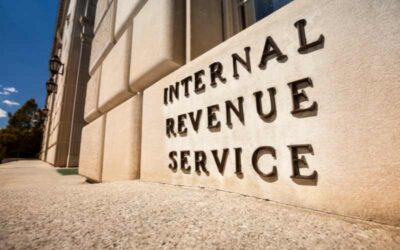Year-end is the time to finish out one year while planning for the next. As the end of 2020 approaches, we want to remind you of various payroll and Form 1099 related changes, as well as other items to consider when processing your year-end forms.
ALL YOU NEED TO KNOW ABOUT MANAGING PAYROLL & WHAT’S DIFFERENT THIS YEAR
Form 1099 Reporting
Form 1099 are due to recipients by February 1, 2021. The forms are also due to the IRS by February 1, 2021, in most cases. If you would like your Smith Schafer professional to prepare Form 1099 for you, please forward the information to our office by January 15, 2021. Information should include a completed W-9 Form for each payee (for a blank W-9 Form, click here), the type of payment issued to the payee (i.e., rent, interest, dividends, miscellaneous services), and the total amount of payments for the year (click here for a blank worksheet to assist you in gathering the required information).
Note: The IRS has increased the failure to file penalties. Penalties may be up to $550 per form if failures are deemed to be an intentional disregard to file.
Form 1099-NEC
IRS has resurrected an old form last used in 1983 to report payments to independent contractors and other non-employee payments.
Form W-2 Reporting
The following is a list of fringe benefits required by the IRS to be included in employees’ W-2s:
- Health and dental insurance premiums paid for S-corporation shareholders
- Life insurance premiums paid for S-corporation shareholders
- Long-term care insurance premiums paid for S-corporation shareholders
- Disability insurance (STD & LTD) premiums paid for S-corporation shareholders
- Health insurance premiums paid for employees (see below for additional information)
- Group term life insurance above $50,000
- Personal use of company-owned vehicles (click here for a worksheet to assist in calculating the amount to add to an employees’ W-2)
- Certain transportation, commuting, and parking benefits
New for 2020 W-2
The IRS allows the truncation of employee social security numbers on the employee copy of the W-2 starting with 2020. Do not truncate the employee’s SSN on the copies filed with the social security administration or other state and local agencies. The truncation is optional for employers, but for those choosing to do so, the SSN should be formatted as follows: xxx-xx-1234.
Minnesota Revenue
Minnesota requires electronic filing of Form W-2 and Form 1099 (with MN withholding) if you have more than 10 forms. Submit forms using your Minnesota e-Services account.
Cafeteria Plan
The amount that an employee can contribute to a flexible spending account (FSA) of a cafeteria plan for health expenditures is limited to $2,750 in 2020 and 2021.
Dependent Care
The maximum contribution amount an employee can make is $5,000 per year. Employers offering this benefit as part of their cafeteria plans need to be aware that additional reporting is required on the employee W-2.
Health Insurance Premiums
Employers who issue 250 or more W-2 Forms are required to disclose the cost of employer-sponsored health coverage. Amounts are reported in box 12 with code DD. Employers with fewer than 250 employees are exempt from this disclosure requirement.
ACA Reporting
Employers that are applicable large employers (at least 50 full-time equivalent employees) are required to provide employees with forms 1095-C on or before March 2, 2021. The due date for filing 1094-C/1095-C by paper filing with the IRS is March 2, 2021 and for electronic filing with the IRS is March 31, 2021.
Health Savings Account
Health savings accounts (HSA) may only be used in conjunction with a high deductible health insurance plan. The total amount an employee or employer can contribute to an HSA account is limited to $3,550 for single coverage and $7,100 for family coverage in 2020 and $3,600 and $7,200, respectively, for 2021. Taxpayers age 55+ can make an additional catch-up contribution of $1,000 for both 2020 and 2021. For plans to qualify as high deductible plans in 2020 and 2021, they must have minimum deductibles of $1,400 for single coverage and $2,800 for family coverage.
For 2020, the maximum out-of-pocket costs for single coverage of $6,900 and family coverage $13,800. The minimum out of pocket costs for 2021 increase to $7,000 for single coverage and $14,000 for family coverage. In some cases, the HSA contributions amounts should be reported on the W-2 with a code W.
Federal Unemployment Tax (FUTA)
The standard FUTA rate is 6.0%; generally, employers receive a credit of 5.4% when they file their Form 940. This results in a net FUTA rate for most states of 0.6%. However, some states are subject to a FUTA credit reduction if they have not repaid loans from the federal unemployment trust fund. For 2020, Minnesota is not a credit reduction state and is eligible for the full credit of 5.4%. For a complete list of credit reduction states, visit the IRS website and search FUTA Credit Reduction.
FICA Tax
The 2020 social security wage base is $137,700 but will increase to $142,800 for 2021. The employee and employer social security tax rate, is unchanged at 6.2%. The Medicare tax rate is also unchanged at 1.45%. Employers are required to withhold the additional Medicare tax on employee wages in excess of $200,000 at a rate of .9%. This is an employee tax only and not matched by the employer.
YEAR-END PAYROLL GUIDE
Below is a simple guide that walks you through your year-end payroll responsibilities. We have broken down the year-end payroll process into nine easy steps. This way, you can close out your payroll and ensure that you file all the proper tax forms on-time. To make things even easier for you, we have also created a printable Year-End Payroll Checklist so you can mark your progress.
1. Confirm Employee Information
Is personal employee information correct? Ensure employee records are accurate for each employee:
- Full legal name
- Social security number
- Current address
- Other contact information
This information should already be in the employee personnel record, but now is the time to correct mistakes before distributing year-end W-2 forms to each employee. A missing or incorrect name or Social Security number can lead to penalties or additional work to amend returns.
2. Ensure All Payroll is Recorded
Include all payments for commissions, bonus pay, or wage payments run outside of the regular payroll schedule (e.g., retroactive pay). Do not forget to include handwritten or manual calculated payroll checks. Lastly, make sure any voided paychecks have been processed accurately in the current year’s payroll system.
3. Verify Employee Fringe Benefits & Deductions
Confirm each employee’s taxable fringe benefits and their deductions. If any benefits are not accounted for, add these to the last paycheck. Examples include:
- Child support withholding
- Group life term insurance
- S-Corp owner health insurance paid by the company (include payments for the year in federal and state wages)
- Personal use of company vehicle
- Keep track of any paid time off and consider any adjustments required based on company policy.
4. Verify your Employer Information is Up to Date
Review the four periods of quarterly payroll reports and reconcile them to the W-3 form. Compare payroll tax deposits for Federal and State to ensure they agree with payroll tax liability records.
5. Bring Everything Together with a Reconciliation
Review previously filed quarterly payroll reports and the one for the fourth quarter, and reconcile them to the W-3 form. Compare payroll tax deposits for Federal and State to ensure they agree with payroll tax liability records.
6. Confirm your Deposit Frequency for the New Year
Deposit requirements can change from year-to-year. You need to review the lookback period payroll liability totals to ensure the correct deposit frequency heading into January 2021. For form 941 filers (quarterly), the lookback period is July 1, 2019 – June 30, 2020. For form 944 (annual) filers, the lookback period is generally the 2019 calendar year.
Regardless of filing status, if the total lookback period liability is $50,000 or less, the taxpayer is a monthly depositor. If the lookback period liability is more than $50,000, the taxpayer is a semiweekly depositor. The IRS and/or State agencies may have sent a notice before the end of the year regarding tax deposit/filing frequencies changes.
7. Check your Tax Rates
Update tax rates and wage base thresholds for state unemployment and disability insurance in your payroll processing system. Many state agencies issue letters in November with rates for the new year. Enter the new rate with an effective date of January 1.
Make sure to check your tax rates and update withholding tax tables. The IRS and state withholding table updates are generally made available by the organizations in December. Be sure to download and apply all payroll updates from your software providers when available to ensure your system is up to date and proper withholding is calculated on employee payroll checks.
8. Ask Employees to Review Withholding Allowances
Although employees can typically change W-4 forms at any time, you should encourage them to review their withholding at the end of the year. Employees indicate their withholding requests on form W-4 for federal income tax withholding or a state specific form for state income tax withholding.
9. After the New Year
All employers have tasks that carry to the next year; a few required to-dos include:
- Update employee records for any raises or changes in deductions effective January 1
- Distribute form W-2 to employees on or before February 1, 2021
- File W-2 and W-3 with the Social Security Administration and required state agencies by February 1, 2021.





